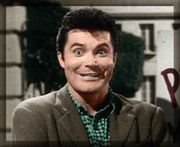Since the gullible are celebrating the false holiday of Kwanzaa at this time I offer this essay by Paul Mulshine which was posted on Front Page Magazine a few years ago as a public service.
On December 24, 1971, the New York Times ran one of the first of many articles on a new holiday designed to foster unity among African Americans. The holiday, called Kwanzaa, was applauded by a certain sixteen-year-old minister who explained that the feast would perform the valuable service of "de-whitizing" Christmas. The minister was a nobody at the time but he would later go on to become perhaps the premier race-baiter of the twentieth century. His name was Al Sharpton and he would later spawn the Tawana Brawley hoax and then incite anti-Jewish tensions in a 1995 incident that ended with the arson deaths of seven people.
Great minds think alike. The inventor of the holiday was one of the few black "leaders" in America even worse than Sharpton. But there was no mention in the Times article of this man or of the fact that at that very moment he was sitting in a California prison. And there was no mention of the curious fact that this purported benefactor of the black people had founded an organization that in its short history tortured and murdered blacks in ways of which the Ku Klux Klan could only fantasize.
It was in newspaper articles like that, repeated in papers all over the country, that the tradition of Kwanzaa began. It is a tradition not out of Africa but out of Orwell. Both history and language have been bent to serve a political goal. When that New York Times article appeared, Ron Karenga's crimes were still recent events. If the reporter had bothered to do any research into the background of the Kwanzaa founder, he might have learned about Karenga's trial earlier that year on charges of torturing two women who were members of US (United Slaves), a black nationalist cult he had founded.
A May 14, 1971, article in the Los Angeles Times described the testimony of one of them: "Deborah Jones, who once was given the Swahili title of an African queen, said she and Gail Davis were whipped with an electrical cord and beaten with a karate baton after being ordered to remove their clothes. She testified that a hot soldering iron was placed in Miss Davis' mouth and placed against Miss Davis' face and that one of her own big toes was tightened in a vise. Karenga, head of US, also put detergent and running hoses in their mouths, she said."
Back then, it was relatively easy to get information on the trial. Now it's almost impossible. It took me two days' work to find articles about it. The Los Angeles Times seems to have been the only major newspaper that reported it and the stories were buried deep in the paper, which now is available only on microfilm. And the microfilm index doesn't start until 1972, so it is almost impossible to find the three small articles that cover Karenga's trial and conviction on charges of torture. That is fortunate for Karenga. The trial showed him to be not just brutal, but deranged. He and three members of his cult had tortured the women in an attempt to find some nonexistent "crystals" of poison. Karenga thought his enemies were out to get him.
And in another lucky break for Karenga, the trial transcript no longer exists. I filed a request for it with the Superior Court of Los Angeles. After a search, the court clerk could find no record of the trial. So the exact words of the black woman who had a hot soldering iron pressed against her face by the man who founded Kwanzaa are now lost to history. The only document the court clerk did find was particularly revealing, however. It was a transcript of Karenga's sentencing hearing on Sept. 17, 1971.
A key issue was whether Karenga was sane. Judge Arthur L. Alarcon read from a psychiatrist's report: "Since his admission here he has been isolated and has been exhibiting bizarre behavior, such as staring at the wall, talking to imaginary persons, claiming that he was attacked by dive-bombers and that his attorney was in the next cell. … During part of the interview he would look around as if reacting to hallucination and when the examiner walked away for a moment he began a conversation with a blanket located on his bed, stating that there was someone there and implying indirectly that the 'someone' was a woman imprisoned with him for some offense. This man now presents a picture which can be considered both paranoid and schizophrenic with hallucinations and elusions, inappropriate affect, disorganization, and impaired contact with the environment."
The founder of Kwanzaa paranoid? It seems so. But as the old saying goes, just because you're paranoid it doesn't mean that someone isn't out to get you.
ACCORDING TO COURT DOCUMENTS, Karenga's real name is Ron N. Everett. In the '60s, he awarded himself the title "maulana," Swahili for "master teacher." He was born on a poultry farm in Maryland, the fourteenth child of a Baptist minister. He came to California in the late 1950s to attend Los Angeles Community College. He moved on to UCLA, where he got a Master's degree in political science and African Studies. By the mid-1960s, he had established himself as a leading "cultural nationalist." That is a term that had some meaning in the '60s, mainly as a way of distinguishing Karenga's followers from the Black Panthers, who were conventional Marxists.
The rest of the essay goes on to detail the "gang war" between Karenga's United Slaves and the Black Panthers over control of the new Afro-American Studies Center at UCLA which culminated with the shooting of two of the Panthers by two members of US.
This was when Karenga's slide into paranoia and delusion began to accelerate leading to the incident in which he and two accomplices tortured two female US members because Karenga believed that they were attempting to poison him by placing "crystals" in his food.
And what of the "holiday" that Karenga created?
LOOK AT ANY MAP OF THE WORLD and you will see that Ghana and Kenya are on opposite sides of the continent. This brings up an obvious question about Kwanzaa: Why did Karenga use Swahili words for his fictional African feast? American blacks are primarily descended from people who came from Ghana and other parts of West Africa. Kenya and Tanzania—where Swahili is spoken—are several thousand miles away, about as far from Ghana as Los Angeles is from New York. Yet in celebrating Kwanzaa, African-Americans are supposed to employ a vocabulary of such Swahili words as "kujichagulia" and "kuumba." This makes about as much sense as having Irish-Americans celebrate St. Patrick's Day by speaking Polish. One possible explanation is that Karenga was simply ignorant of African geography and history when he came up with Kwanzaa in 1966. That might explain why he would schedule a harvest festival near the solstice, a season when few fruits or vegetables are harvested anywhere. But a better explanation is that he simply has contempt for black people.
An essay by Tony Snow going point by point taking Kwanzaa apart can be found archived on Jewish World Review. Snow's article does to the principles of the holiday what Mulshine's Front Page Magazine piece does to the holiday's founder and they should be read together.
Monday, December 25, 2006
Happy Kwanzaa?
Posted by
Lemuel Calhoon
at
9:57 AM
![]()
Labels: Kwanzaa, Race Politics
Subscribe to:
Comment Feed (RSS)










|